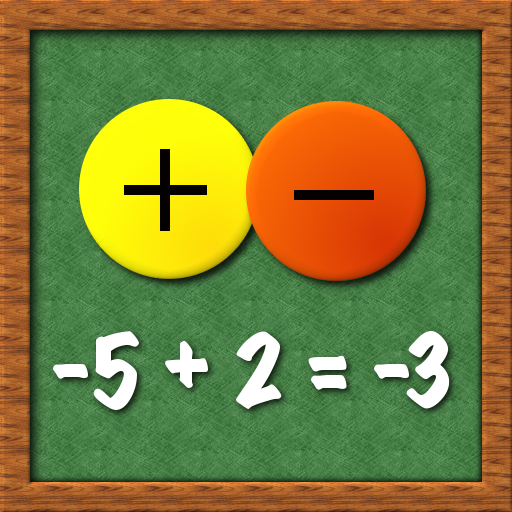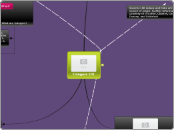
Integers 101
Absolute Value
Absolute value of an integer is the number of units the integer is from 0 on the number line.
The absolute value of an integer is always positive
no matter if the sign of the integer is negative or positive.
Check out this website for and example on how to solve absolute value equations.

Modeling Integer Addition and Subtraction
Modeling Integer Addition

Counters Model
With counters model one color represents the negative integer, i.e., -1, and another color is used to represent the positive integer, i.e., +1 or 1.
Integer Addition Using Counters
Counters Model Example
Charged-Field Model
Similar to the counter-model, is the changed-field model
Based on the idea that the same number of positive and negative charges produces a field with 0 charge, but an excess of positive charges or negative charges produces a result of an negative or positive charged field.
Example of Charged-Field Model

Number-Line Model
Video depicting Number-Line Model
In the number-line model a person always starts at zero and "walks" on the number line.
To represent addition (+), always walk forward and you face right before walking. For negative integers, face left before walking.
Modeling Integer Subtraction
Counters Model
Counters Model Subtraction
A counters model may be used to find the differnce of two integers
Charged-Field Model
Just as addition, a positive number is modeled by putting positive charges into the field a negative number is modeled by putting negative charges into the field.
Subtraction is modeled by putting integral numbers of charges in the field, followed by taking an integral number of charges from the field.
Eample of Charged-Field Model
Number-Line Model
As when modeling addition, a person always starts on the number line at 0 and walks on the number line. To model integer subtraction always walk backward after seeing the subtraction sign (-).
Procedures for Adding Integers
Adding two positive integers: Add as with whole numbers
Adding two negative integers: Add absolute values the sum is negative.
Adding a positive and a negative integer: Subtract the lesser of the absolute values of the integers from the greater. Give the answer the same sign as the integer with greater absolute value
Multiplication, Division, and Other Properties of Integers
Counters Model
Use black counters for positive (+) integers and red counters for negative (-) integers.
Counters Model of Multiplication Examples
Charged-Fields Model
A positive number is modeled by putting positive charges into the field and a negative number is modeled by putting in negative charges into the field.
It is modeled by putting multiples of same-size groups of charges when multiplying by a positive integer and taking out multiples of same-size groups of charges when multiplying by a negative integer. The product is the charge of the resulting field.
Example of Charged-Field Model Multiplication
Number-Line Model
First factors, positive integers, they are modeled by walking east, negative integers by walking west.
In the second factor, positive integers are modeled by hours from now, negative integers by hours ago.
In the product, positive integers are modeled by miles east of zero, negative integers by miles west of zero.
Check out this example of Number-Line Model Multiplication
Procedures for Multiplying Integers
Integer Division
Dividing by an integer can be thought of as finding the missing factor.
Check out this video with Integer Division
Procedures for Dividing Integers
What are Integers?
Subtopic
Integers are like whole numbers, 0, 1, 2,3,4,5 ..., but they also include negative numbers. integers can be negative {-1, -2,-3, -4, -5, … }, positive {1, 2, 3, 4, 5, … }, or zero {0}
Integers consist of positive integers, negative integers, and zero.
Sources: All videos and links are linked to source of origin. Further information is courtesy of O'Daffer, Charles, Cooney, Dossey, and Schielack
Integer Uses
Temperature
When reading a thermometer you read above zero temperatures as positive and below zero temperatures as negative.
Understanding integers using temperature
Altitude
Geographically, we represent sea level with integers. Obviously, below sea level is represented with negative integers.
Stock Gain/Loss
Money
When working with money, be it cash, checking or credit card. You can look at the money you spent, a negative sum and the money you earned as a positive sum. In the instance of a checkbook, you need to balance, hopefully keeping your account in the positive.
Adding Integers using Money Analogy
